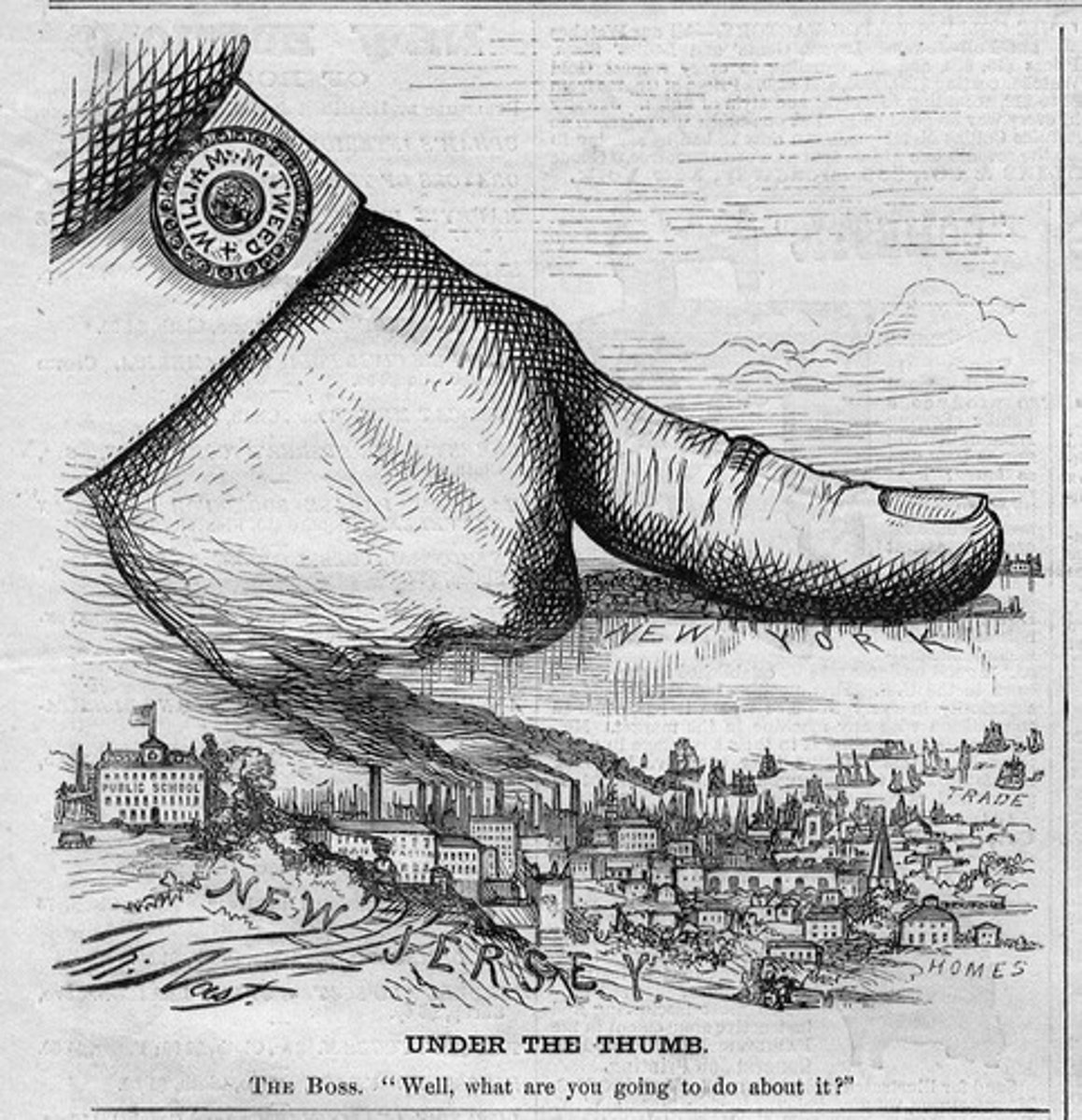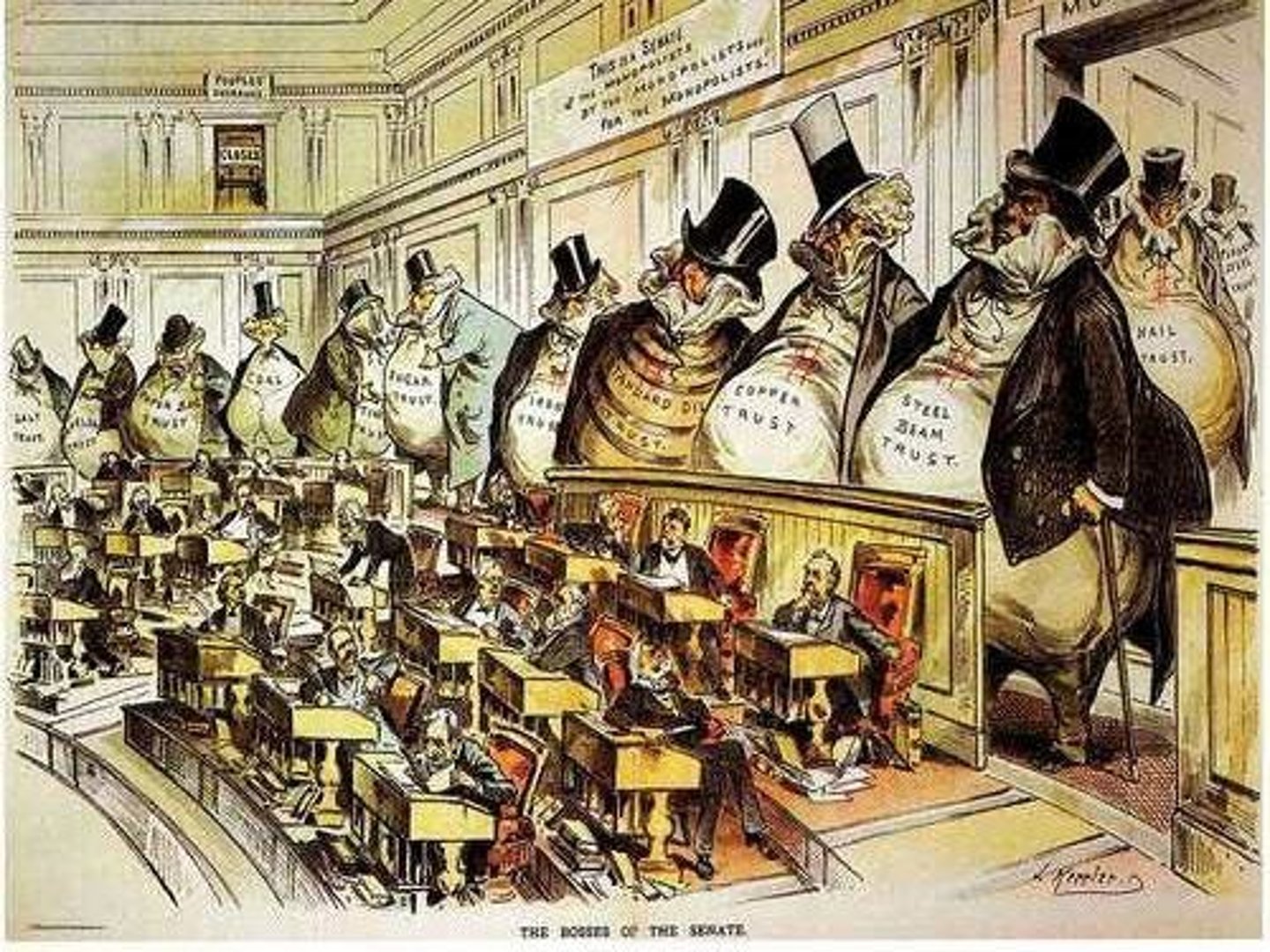Politics and Reform in the Gilded Age
1/52
There's no tags or description
Looks like no tags are added yet.
Name | Mastery | Learn | Test | Matching | Spaced |
|---|
No study sessions yet.
53 Terms
Gilded Age
Period marked by political corruption and economic growth.
Political Machines
Organizations controlling city politics through patronage.
Boss Tweed
Leader of Tammany Hall, notorious for corruption.

Tammany Hall
Political machine in New York City.
Pendleton Act
1883 law establishing merit-based civil service.
Civil Service Reform
Movement to reduce patronage in government jobs.
Stalemate Politics
Congress divided, hindering significant legislation.
Voting Blocs
Well-defined groups supporting specific political parties.
Democratic Bloc
Supported by Northern whites, blacks, and nativists.
Republican Bloc
Supported by Southern whites, farmers, and immigrants.
Corruption
Widespread unethical practices in politics.
Election Fraud
Manipulation of election processes for political gain.
Kickbacks
Illegal payments to politicians for favors.
Interstate Commerce Commission (ICC)
Established to regulate railroad industry in 1887.
Sherman Antitrust Act
1890 law prohibiting trade restraints.
Farmers' Alliance
Organization aimed at improving farmers' conditions.
Populist Party
Political party advocating for farmers' rights.
Omaha Platform
1892 Populist Party's political reform agenda.
Direct Election of Senators
Advocated for senators to be elected by voters.
Secret Ballot
Voting method ensuring privacy for voters.
Unlimited Coinage of Silver
Proposal to increase money supply by silver.
Graduated Income Tax
Tax system where rates increase with income.
Public Ownership of Railroads
Government control of railroads for public benefit.
William Jennings Bryan
Prominent advocate for free silver and Populism.
Cross of Gold Speech
Bryan's speech opposing the gold standard.
Gold Standard
Monetary system based on gold reserves.
Panic of 1893
Economic depression triggered by railroad bankruptcies.
Election of 1896
Bryan lost to pro-business Republican McKinley.
Disenfranchisement
Denial of voting rights, especially for blacks.
Jim Crow Laws
State laws enforcing racial segregation.
Thomas Nast
Cartoonist who exposed Boss Tweed's corruption.
Political Loyalties
Strong allegiance to political parties.
Weak Presidents
Presidents lacking significant influence or power.
Industrialization
Rapid economic growth and factory development.
Economic Disparities
Wealth inequality resulting from industrial growth.
Railroad Regulation
Government efforts to control railroad rates.
Farmers' Problems
Issues faced by farmers, including debt and low prices.
High-Interest Loans
Loans with steep repayment costs for farmers.
Foreclosure
Legal process of reclaiming property due to debt.
Nativist Sentiments
Anti-immigrant attitudes prevalent in society.
Labor Rights
Advocacy for fair treatment of workers.
Election of 1892
Weaver received over a million votes.
Influence on Progressive Movement
Populist ideas shaped later reform efforts.
Federal Warehouses
Proposed storage facilities for farmers' crops.
Economic Reforms
Changes aimed at improving financial conditions.
Political Corruption
Dishonest conduct by those in power.
Congressional Bribery
Illegal payments to influence legislative decisions.
Political Boss
Leader of a political machine controlling local jobs.
Railroad Companies
Firms that transported goods across states.
Public Infrastructure
Basic physical systems and services of a community.
Thomas Nast
Cartoonist who exposed political corruption.

Voting Rights
Legal rights to participate in elections.
Economic Growth
Increase in the production of goods and services.